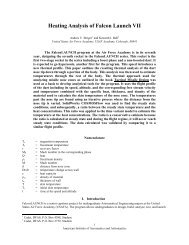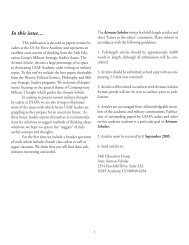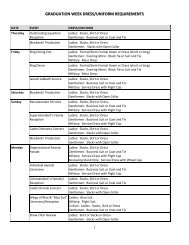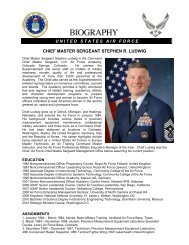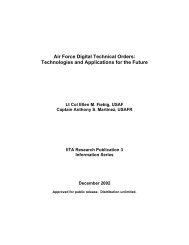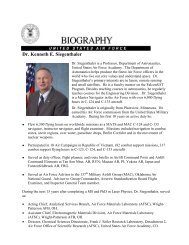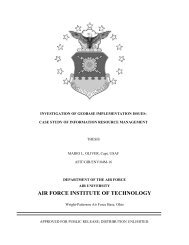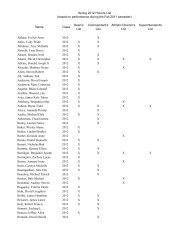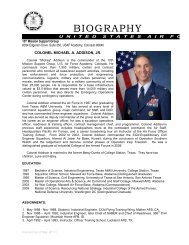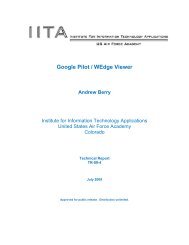the rollback of south africa's biological warfare program
the rollback of south africa's biological warfare program
the rollback of south africa's biological warfare program
Create successful ePaper yourself
Turn your PDF publications into a flip-book with our unique Google optimized e-Paper software.
incidents underscored <strong>the</strong> variable effectiveness and unintended consequences<br />
<strong>of</strong> CBW, as well as <strong>the</strong> difficulties involved in documenting a CBW attack and<br />
those who initiated it.<br />
From <strong>the</strong> late 1970s onward, South Africa stepped up its military activities<br />
by supporting UNITA in Angola and <strong>the</strong> Mozambican Resistance Movement<br />
(RENAMO) in Mozambique. Operation Barnacle was launched, aimed at <strong>the</strong><br />
ANC and Umkhonto we sizwe (MK) throughout sou<strong>the</strong>rn Africa. In May<br />
1978, SADF launched <strong>the</strong> Cassinga raid, in which 800 people were killed. In<br />
<strong>the</strong> wake <strong>of</strong> <strong>the</strong> raid, SADF soldiers and paratroopers were accused <strong>of</strong> using<br />
chemical <strong>warfare</strong>. 30 Combined with <strong>the</strong> reports coming out <strong>of</strong> Rhodesia and<br />
Mozambique <strong>of</strong> CBW usage, <strong>the</strong> Cubans, Angolans, and Mozambicans, as<br />
well as <strong>the</strong> liberation movements came to suspect that South Africa possessed<br />
an <strong>of</strong>fensive CBW <strong>program</strong>.<br />
In Angola in <strong>the</strong> 1980s, South African troops faced increased costs and<br />
maneuverability problems once <strong>the</strong>y were confronted with <strong>the</strong> prospect <strong>of</strong><br />
wearing defensive CBW masks and uniforms that had to be changed daily.<br />
SADF troops routinely avoided local water supplies in Angola and parts <strong>of</strong><br />
Namibia because <strong>the</strong>y had little intelligence about whe<strong>the</strong>r water supplies had<br />
been poisoned by SADF Special Forces secret operations or by guerrillas <strong>of</strong><br />
<strong>the</strong> South West African Peoples Organization (SWAPO), ANC/MK or<br />
UNITA. 31 The SADF experienced repeated difficulties verifying alleged use <strong>of</strong><br />
CBW gas by Cuban-backed Angolan government forces and were unable to<br />
irrefutably rebut allegations that SADF forces used chemical agents against<br />
SWAPO and refugee camps in Angola and Namibia. In addition, reports<br />
persisted that, in early 1989 in Angola, SADF was testing organophosphates,<br />
new generations <strong>of</strong> teargas, and battlefield missile warheads. Supposedly, <strong>the</strong><br />
warheads were being designed to deliver chemical, <strong>biological</strong> agents, and<br />
possibly even a miniaturized nuclear device. Also, in early 1989, UNITA<br />
forces in Angola reportedly experienced “huge losses.” 32 Some sources alleged<br />
11




